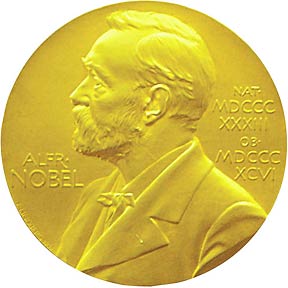Economic vs. Ecological Statistics: Nobel Edition
 Paul Krugman was recently awarded the Nobel Prize in Economics. Reading about the work that lead to his prize, I couldn't help but notice how it was relevant to my recent Economic vs. Ecological Statistics post.
Paul Krugman was recently awarded the Nobel Prize in Economics. Reading about the work that lead to his prize, I couldn't help but notice how it was relevant to my recent Economic vs. Ecological Statistics post.
From the press release:
In addition to economies of scale in production, Krugman’s new theory was based on an assumption that consumers appreciate diversity in their consumption. At the time, this was a rather new concept in economics, but it appeared to correspond to reality.Apparently way back in 1979 Krugman proposed the idea that there was value in increased diversity of products to choose from. I wish I could read the original article to see exactly what he stated, but $31.50 for a 10 page article is a bit steep for me (please hurry open-source science movement). Krugman's work explained why most trade was between rich countries rather than rich and poor countries as Ricardo's comparative advantage model predicted. But, instead of basing his new theory of trade model on the value of product diversity, he went with a model of monopolistic behavior. I think this misses lots of the reason for trade between countries of similar resources. Americans aren't buying French wine because trade allows for greater economies of scale for wineries, but rather because they value having different types of wine to choose from.
This monopolistic model does have some interesting implications on the economic vs. ecological statistics debate. From Marginal Revolution:
Consider the simplest model (based on Krugman 1979). In this model there are two countries. In each country, consumers have a preference for variety but there is a tradeoff between variety and cost, consumers want variety but since there are economies of scale - a firm's unit costs fall as it produces more - more variety means higher prices. Preferences for variety push in the direction of more variety, economies of scale push in the direction of less. So suppose that without trade country 1 produces varieties A,B,C and country two produces varieties X,Y,Z. In every other respect the countries are identical so there are no traditional comparative advantage reasons for trade.This model predicts that with trade global diversity decreases while local diversity increases. Here they argue this is a good thing as consumers all have more products to choose from. Now take this logic and apply to ecology. In Hawaii, it is estimated that there have been 1,000 new invasive plant species introduced while 97 local plant species have gone extinct. The local biodiversity in Hawaii has increased, but global biodiversity has decreased. Ecologists focus on species going extinct and see this as a bad thing, but local Hawaiians have greater diversity of plants on their land then they have ever had before.
Nevertheless, if trade is possible it is welfare enhancing. With trade the scale of production can increase which produces costs and prices. Notice, however, that something interesting happens. The number of world varieties will decrease even as the number of varieties available to each consumer increases. That is, with trade production will concentrate in say A,B,X,Y so each consumer has increased choice even as world variety declines.
Increasing variety for individuals even as world variety declines is a fundamental fact of globalization. In the context of culture, Tyler explains this very well in his book, Creative Destruction; when people in Beijing can eat at McDonald's and people in American can eat at great Chinese restaurants the world looks increasingly similar even as each world resident experiences an increase in variety.
While Krugman didn't try and value the additional selection, Christian Broda and David Weinstein's estimate of the value of increased selection due to trade as the equivalent of a 3% increase in GDP was based on Krugman's model. Krugman writes "I all too often scare students off by demanding that they use less math and more economics". I wish he would have had Broda and Weinstein as students. While I found that the mathematics in this paper were very impressive (by which I mean, I have no clue what the heck they are doing or that it was even possible for imaginary numbers to come into economic analysis), I am not convinced that the economics are solid.
I couldn't understand how they calculate the elasticity of selection, but the lower the value, the more value selection has. On page 57 of this paper they give examples of values: 9.66 for petroleum (not much additional value to extra choice of gasoline) and 2.02 for leather footwear and sneakers (lots of additional value to extra choice of shoes). The way their model works if elasticity of substitution has a value of 2, then when amount of selection doubles, inflation rate is cut in half.
The problem I have with their model is that they multiply the impact of additional selection by inflation rather that subtract it. In their model, if inflation is high, greater selection leads to a greater reduction in inflation (and therefore a larger estimate in the increase in GDP due to greater selection) than if inflation is low. That makes no sense to me. Also, if inflation is negative (as I would expect with high tech products), the impact of more choice would be to make that negative impact smaller (and therefore a lower estimate in the increase in GDP due to greater selection). That seems completely wrong to me. Because of this, I am not at all convinced that their 3% value is accurate.
Krugman wins this year, but I think there is a Nobel prize out there for the economist who can better estimate the value of additional choice and integrate it into economic models.





No comments:
Post a Comment
Note: Only a member of this blog may post a comment.